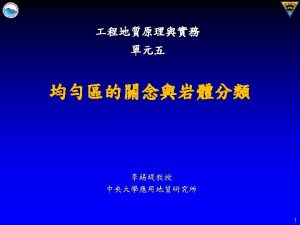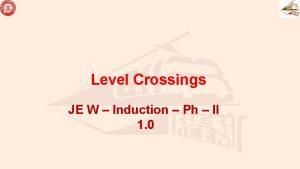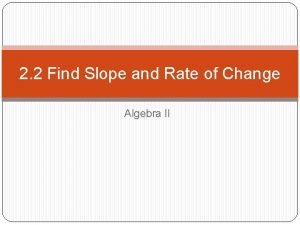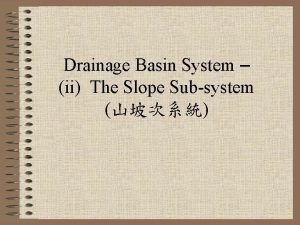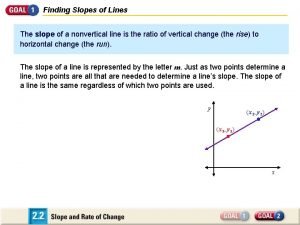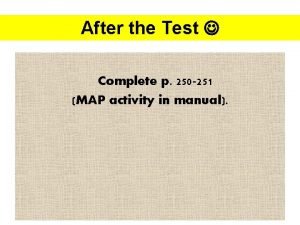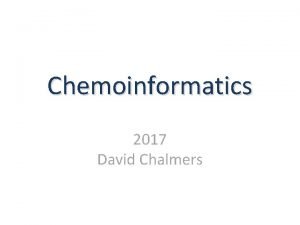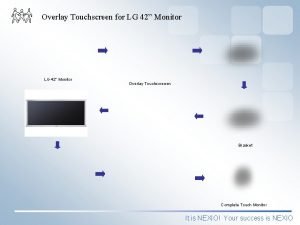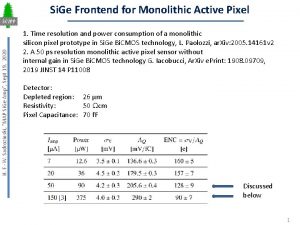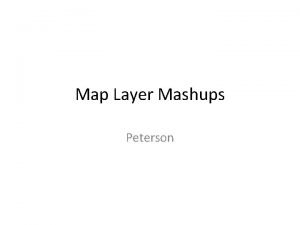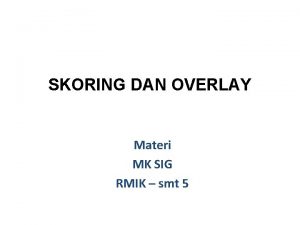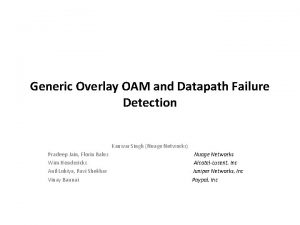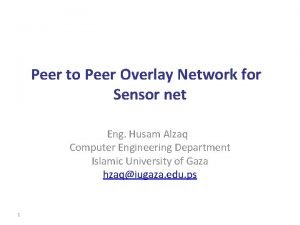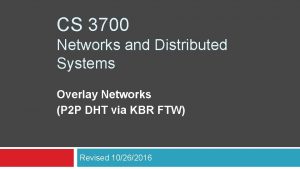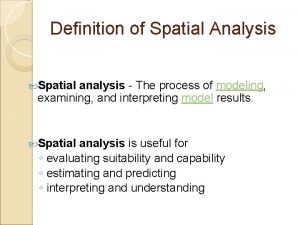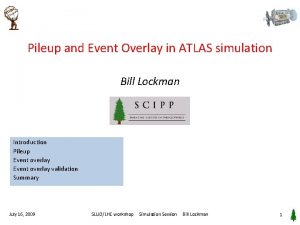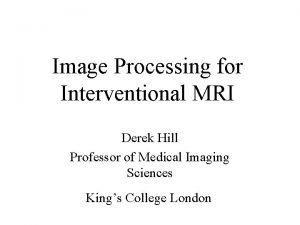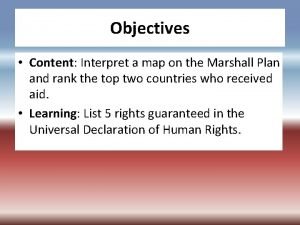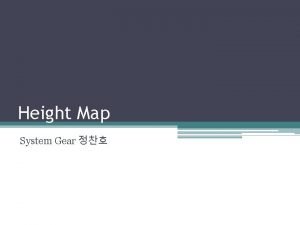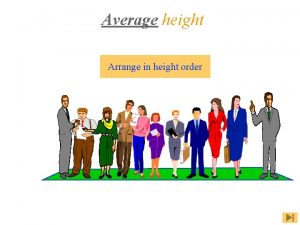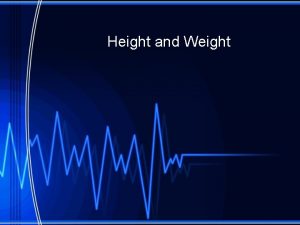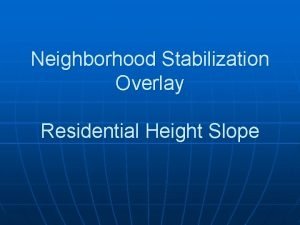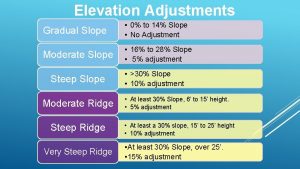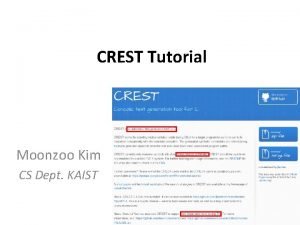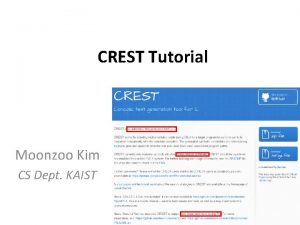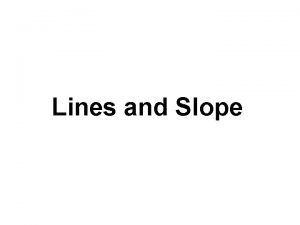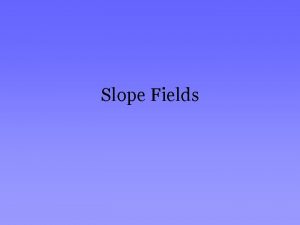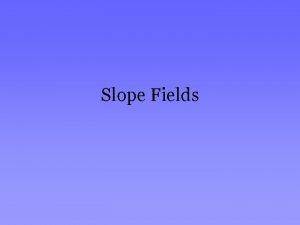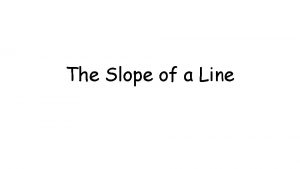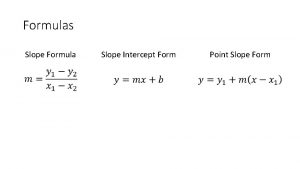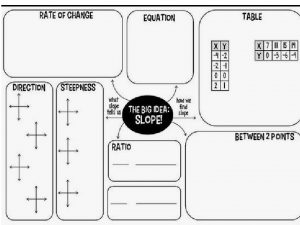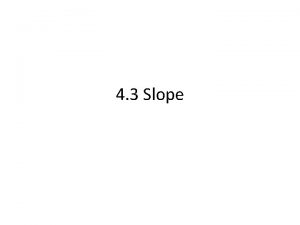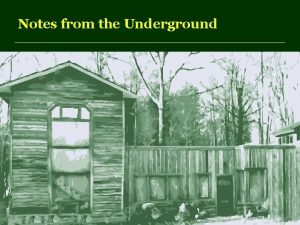Elevation of crest Total slope height slope Overlay




































- Slides: 36




地形地質均勻區劃分 Elevation of crest Total slope height slope Overlay of GIS layers ISODATA classification … 為了進行全台灣較大比例尺的 山崩潛感分析與製圖,先做全 區的地形地質均勻區劃分,以 供分區建立潛感模型及做為未 來山崩預測之用。 Procedure of ISODATA for geomorphologic classification Each terrain unit has minimum difference in geomorphologic and geologic characters within the unit and maximum contrast among adjacent units. A landslide prediction model will be developed for a terrain unit, so that a susceptibility map be developed for entire Taiwan. Geomorphologic classification of Taiwan using ISODATA Terrain units division of Taiwan 4





岩體分類 Rock Mass Rating (RMR) system: applied in tunnels, foundations and slopes design. Z. T. Bieniawski Parameter Rating Strength of Intact Rock 0~15 RQD 3~20 Spacing of discontinuities 5~20 Condition of Discontinuitie s Persistence 0~6 Aperture 0~6 Roughness 0~6 Infilling 0~6 Weathering 0~6 Groundwater 0~30 0~15 9

RMR System (After Beiniawski 1989) 10

RMR System (After Beiniawski 1989) 11

RMR System (After Beiniawski 1989) 12

RMR System (After Beiniawski 1989) 13

Guidelines for excavation and support of 10 m span rock tunnels in accordance with the RMR system (After Beiniawski 1989) 14

Q system • Based on case histories in Scandinavia • Numerical values on a log scale • Range 0. 001 to 1000 • represents roughness and frictional characteristics of joint walls or infill material • represents the structure of the rockmass • crude measure of block or particle size • consists of two stress parameters • SRF can be regarded as a total stress parameter measure of – loosening load as excavated through shear zones – rock stress in competent rock – squeezing loads in plastic incompetent rock • JW is a measure of water pressure (After Barton et al. 1974) 15

Q system (After Barton et al. 1974) 16

(After Barton et al. 1974) 17

(After Barton et al. 1974) 18

Q system (After Barton et al. 1974) 19

Q system (After Barton et al. 1974) 20

Q system (After Barton et al. 1974) 21

Q system Resolves to three parameters • Block size ( RQD / Jn ) • Interblock shear strength ( Jr / Ja ) • Active stress ( Jw / SRF ) Does NOT include joint orientation 22

Equivalent Dimension De 23

Estimated support categories based on the tunnelling quality index Q 24

Rock Mass Classification System • RMR and Q system or variants are the most widely used • Both incorporate geological, geometric and design/engineering parameters to obtain a “value” of rock mass quality • Empirical and require subjective assessment • Always use two systems for comparison 25

Prediction of in-situ deformation modulus Em from rock mass classifications 26


Geological Strength Index (GSI) • Method to link the constants m and j of Hoek-Brown failure criterion to observations in the field ie: a possible solution to the problem of estimating strength of jointed rock mass • A system for estimating the reduction in rock mass strength for different geological conditions • Overcomes deficiencies of RMR for poor quality rock 28

Estimate of Geological Strength Index GSI based on geological descriptions 29



完整岩石之岩性係數 mi (摘自Hoek and Brown, 1997) 32



Thanks for your attention! 35

• 經調查,某區域泥岩單壓強度 55 MPa,RQD值為 60%,岩體有三 個 主 要 不 連 續 面 : (1)bedding: spacing=0. 4 m, high weathered, slightly rough surfaces, continuous, orientation of 180/10; (2)joint 1: spacing=0. 4 m, slightly weathered, slightly rough surfaces, continuous, orientation of 185/75; (3)joint 2:spacing=0. 4 m, slightly weathered, slightly rough surfaces, continuous, orientation of 090/80。若欲於地 下200公尺處由東往西開挖一條 10公尺直徑之隧道,請盡你所能根 據岩體分類法(RMR法與Q法)提供 程師設計分析所需之資訊, 包括:評值、支稱設計建議條件、岩體設計參數等。 36
 Crest of slope
Crest of slope Tvu of level crossing
Tvu of level crossing Slope review classifying slope
Slope review classifying slope Slope decline theory
Slope decline theory Converting point slope to slope intercept
Converting point slope to slope intercept Slopes of lines
Slopes of lines Berlin wall map overlay
Berlin wall map overlay Rapid overlay of chemical structures
Rapid overlay of chemical structures Network virtualization overlay
Network virtualization overlay Nexio touch screen
Nexio touch screen Hfw map overlay
Hfw map overlay Skype overlay
Skype overlay Old map overlay
Old map overlay Skoring pada poligon
Skoring pada poligon What colour overlay is best for dyslexia
What colour overlay is best for dyslexia Usmc map overlay
Usmc map overlay Overlay
Overlay Vector overlay operations
Vector overlay operations Pc weld overlay
Pc weld overlay Homing overlay experiment
Homing overlay experiment Overlay oam packet
Overlay oam packet Overlay multicast
Overlay multicast Overlay-netzwerk
Overlay-netzwerk Limitations of absolute loader
Limitations of absolute loader Overlay transport virtualization ppt
Overlay transport virtualization ppt Polyester concrete overlay
Polyester concrete overlay Overlay networks in distributed systems
Overlay networks in distributed systems Raster overlay
Raster overlay Overlay network
Overlay network Seo specialist punto rojo
Seo specialist punto rojo Triggered overlay
Triggered overlay Interventional mri
Interventional mri Berlin wall map overlay
Berlin wall map overlay The changing slope of the total cost curve reflects
The changing slope of the total cost curve reflects Pasivo total sobre activo total
Pasivo total sobre activo total Total revenue minus total expenses
Total revenue minus total expenses Total revenues minus total costs equals
Total revenues minus total costs equals
